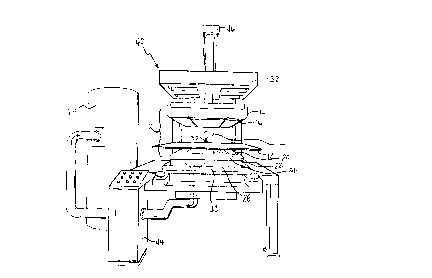Some of the information on this Web page has been provided by external sources. The Government of Canada is not responsible for the accuracy, reliability or currency of the information supplied by external sources. Users wishing to rely upon this information should consult directly with the source of the information. Content provided by external sources is not subject to official languages, privacy and accessibility requirements.
Any discrepancies in the text and image of the Claims and Abstract are due to differing posting times. Text of the Claims and Abstract are posted:
| (12) Patent: | (11) CA 2166591 |
|---|---|
| (54) English Title: | METHOD OF BONDING A SEAT TRIM COVER TO A FOAM CUSHION UTILIZING AN ACCELERATED ADHESIVE ACTIVATOR |
| (54) French Title: | PROCEDE DE COLLAGE DE REVETEMENT SUR UN COUSSIN EN MOUSSE UTILISANT UN ACTIVATEUR D'ADHESIF |
| Status: | Expired and beyond the Period of Reversal |
| (51) International Patent Classification (IPC): |
|
|---|---|
| (72) Inventors : |
|
| (73) Owners : |
|
| (71) Applicants : |
|
| (74) Agent: | SMART & BIGGAR LP |
| (74) Associate agent: | |
| (45) Issued: | 1999-03-16 |
| (22) Filed Date: | 1996-01-04 |
| (41) Open to Public Inspection: | 1996-07-14 |
| Examination requested: | 1996-01-04 |
| Availability of licence: | N/A |
| Dedicated to the Public: | N/A |
| (25) Language of filing: | English |
| Patent Cooperation Treaty (PCT): | No |
|---|
| (30) Application Priority Data: | ||||||
|---|---|---|---|---|---|---|
|
The method of making a cushion assembly
(10) uses a trim layer (12) and cushion pad (14)
with an adhesive (16) therebetween. The adhesive
(16) is a hot melt adhesive applied to the
contoured surface of the cushion pad (14) and
reheated on the cushion pad (14) prior to use
thereof in the subject process. An adhesive
activator (30) is applied to the trim layer (12),
which had been previously placed on a mold (22).
The cushion pad (14) and trim layer (12) are
compressed against one another with the adhesive
(16) and activator (30) therebetween to bond the
cushion pad (14) and trim layer (12) together.
Méthode de fabrication d'un coussin (10) utilisant une couche de matériau de garnissage (12) et un rembourrage (14) assemblés au moyen d'un adhésif (16). L'adhésif (16) est appliqué en thermofusion à la surface moulante du rembourrage (14) puis chauffé sur le rembourrage (14) avant d'être mis en oeuvre dans le présent procédé. Un activateur d'adhésif (30) est appliqué sur la couche de garnissage (12) qui avait été précédemment placée sur un moule (22). Le rembourrage (14) et la couche de garnissage (12) sont pressés l'un contre l'autre, l'adhésif (16) et l'activateur (30) étant interposés entre les deux pour assurer le collage du rembourrage (14) et de la couche de garnissage (12).
Note: Claims are shown in the official language in which they were submitted.
Note: Descriptions are shown in the official language in which they were submitted.

2024-08-01:As part of the Next Generation Patents (NGP) transition, the Canadian Patents Database (CPD) now contains a more detailed Event History, which replicates the Event Log of our new back-office solution.
Please note that "Inactive:" events refers to events no longer in use in our new back-office solution.
For a clearer understanding of the status of the application/patent presented on this page, the site Disclaimer , as well as the definitions for Patent , Event History , Maintenance Fee and Payment History should be consulted.
| Description | Date |
|---|---|
| Inactive: IPC from MCD | 2006-03-12 |
| Inactive: IPC from MCD | 2006-03-12 |
| Inactive: IPC from MCD | 2006-03-12 |
| Inactive: IPC from MCD | 2006-03-12 |
| Time Limit for Reversal Expired | 2002-01-04 |
| Letter Sent | 2001-01-04 |
| Grant by Issuance | 1999-03-16 |
| Pre-grant | 1998-12-02 |
| Inactive: Final fee received | 1998-12-02 |
| Inactive: Received pages at allowance | 1998-08-31 |
| Notice of Allowance is Issued | 1998-06-05 |
| Letter Sent | 1998-06-05 |
| Notice of Allowance is Issued | 1998-06-05 |
| Inactive: Status info is complete as of Log entry date | 1998-06-02 |
| Inactive: Application prosecuted on TS as of Log entry date | 1998-06-02 |
| Inactive: Approved for allowance (AFA) | 1998-04-30 |
| Application Published (Open to Public Inspection) | 1996-07-14 |
| Request for Examination Requirements Determined Compliant | 1996-01-04 |
| All Requirements for Examination Determined Compliant | 1996-01-04 |
There is no abandonment history.
The last payment was received on 1998-12-22
Note : If the full payment has not been received on or before the date indicated, a further fee may be required which may be one of the following
Patent fees are adjusted on the 1st of January every year. The amounts above are the current amounts if received by December 31 of the current year.
Please refer to the CIPO
Patent Fees
web page to see all current fee amounts.
| Fee Type | Anniversary Year | Due Date | Paid Date |
|---|---|---|---|
| MF (application, 2nd anniv.) - standard | 02 | 1998-01-05 | 1997-12-31 |
| Final fee - standard | 1998-12-02 | ||
| MF (application, 3rd anniv.) - standard | 03 | 1999-01-04 | 1998-12-22 |
| MF (patent, 4th anniv.) - standard | 2000-01-04 | 1999-12-20 |
Note: Records showing the ownership history in alphabetical order.
| Current Owners on Record |
|---|
| LEAR SEATING CORPORATION |
| Past Owners on Record |
|---|
| ERIC F. KOZLOWSKI |